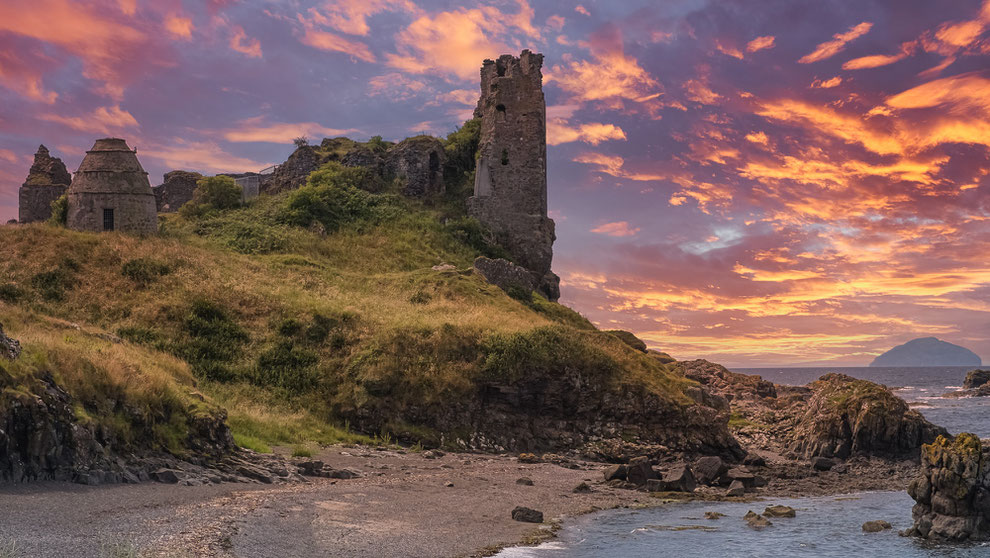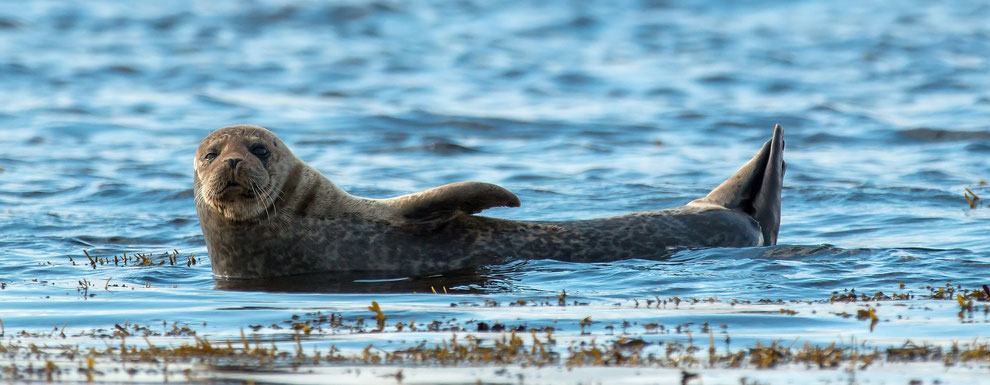Selkies, myth in Scottish water and their role in Outlander

Once upon a time ....... a tired hunter returned from his journey. It was late in the evening and he was walking along the shoreline. Three beautiful naked women danced in the surf in the moonlight. The hunter came closer and saw their skins on the beach. He immediately understood that the women were selkies. The hunter longed for a woman, so he stole the skin of one of the women. Selkies or silkies, as they are called in Outlander, live according to old stories along the Scottish coast, but who are these mysterious creatures? Do they really exist? And what can we learn from them?
Silkies in Outlander
In the first Outlander book, Claire learns the story Jamie's parents, Ellen MacKenzie and Brian Fraser. Ellen's brothers (Dougal and Collum) had forged the plan to marry Ellen to the Grant clan to strengthen the ties between the two clans. Ellen absolutely didn't want to marry into the Grant clan and mysteriously disappeared from Castle Leoch. Witnesses later told that they had seen a handsome man with hair like that of black selkies and eyes like a cat. As a result, rumor soon spread that Ellen had been abducted by a selkie.
In the TV series, there is a scene in which Murtagh looks out over the coast awaiting Jamie's return from France. The moment he sees a group of seals, he thinks of the legend of the selkies. "Are you Brian?" He says. "Have you come back to welcome your son?"
Silkie's Island
In the third episode of season 3 "All Debt’s Paid", Jamie escapes from the Ardsmuir prison. He has heard a prisoner talk about La Dame Blanche, who was waiting on the island where the silkies live and where a treasure is hidden. La Dame Blanche is the nickname Claire used during their adventures in France, so Jamie swims to Silkie's Island to find her. He strands on the island, climbs the castle ruins and finds the MacKenzie treasure, but there is no sign of La Dame Blance.
Later on, in episode 8 "First Wife," Jamie and Claire return Silkie's Island with Young Ian to collect the MacKenzie treasure so that Jamie can pay for his divorce of Laoghaire.
Silkie's island exists, although it is not really called that, the film recordings were made around the village of Dunure and Dunure Castle in Scotland (see photo). There is a famous walk called The Dunure Labyrinth. This path leads you to the spot on the hill where Jamie and Claire overlooked the sea to follow Young Ian's swimming trip to Silkie's Island. Unfortunately Ian was kidnapped by pirates and the treasure was taken by the pirates.
Legend of the selkie
Like most magic transformations, the gift of disguising oneself as a human was not without danger. If a human man stole the seal skin of a female selkie, the selkie could no longer return to the sea. She was then forced to become his bride. She became a perfect wife, even had children with her human husband, but although she loved her children very much, a selkie never became happy. She missed the sea too much. Her human skin dried and burst. The only way to return to the sea was to find or buy back her skin (there are different versions of this story), even though that meant she would abandon her children.
Male selkies would exert a strong attraction to human women, especially women who were dissatisfied with their lives. According to myths, a woman who wants to contact a selkie must cry seven tears into the sea.
Several theories circulate about where the myths about selkies come from. According to a Scottish folklorist, the myths about selkies may be traced back to contact between the first inhabitants of Scotland with the Finns and Samen (from Lapland, Norway). The Samen used kayaking and wore clothing made from seal fur, which may have contributed to the stories about seals that became shed after shedding their skins.
The name Selkie is derived from the Old Scottish word "selich", which is derived from the Old English "seolh". In modern English that later became "seal". Selkies were a special kind of seal, which, according to myths could disguise themselves in a human form. Most stories about selkies are romantic tragedies in which people (sometimes without realizing it) fall in love with a selkie in human form.
In stories from the Shetland Islands, selkies sometimes lure people into the sea. These people then never returned to the land. Injuring or killing a selkie was a perilous job that did not remain without consequences. The myths warned that someone who killed a selkie and let his blood drip into the sea, would evoke a fierce storm that would drown many.
The selkie's song
In the North Sea, most gray seals live around the Scottish islands and along the British coast. About 40% of all gray seals in the world and 95% of all gray seals in Europe live here.
If you are ever at the Scottish waters and it is calm and if you listen carefully, you can hear the selkies singing. The gray seals "sing" to each other when no enemies are lurking. They use their vocal cords in the same way as people do. It sounds mysterious and sometimes even a little sad as if they are homesick for something indefinable, yet it is always enchanted. This fairy-tale sound is said to be the origin of all legends and myths about the selkie.
Meaning of the legend
Behind myths and legends there usually is a deeper meaning than just a fairytale story. The message of this legend can be found in the grays and greens of the sea, which flows along rocks to the misty horizon. The selkie stands for the soul's desire for its true destiny, which can be far away and very different from our daily existence. The selkie teaches us to listen to and follow the deepest desires of our heart. But to understand the desires of your heart you must first be honest with yourself. As long as you maintain the appearance of feeling confident and accepted, you pay a high price. So keep your "seal skin" on and have the courage to dive into the waves.
Jewel that belongs to this story
With this Selkie story I made the bracelet below. In addition to a nice seal charm, the bracelet contains recycled sea glass, shells and real freshwater pearls. The flower is made by hand by the French artisan Lysa.





